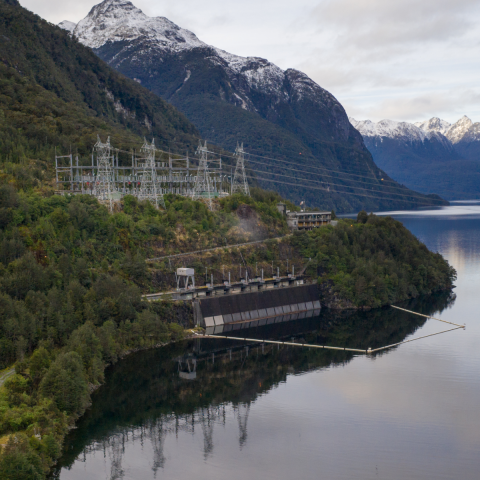he original construction of the Manapōuri hydro station was a huge engineering achievement. The project took 1,800 workers eight years to complete in extremely harsh conditions. It involved constructing the power station 200 metres below a granite mountain in an underground cavern.
Several access and service tunnels were built. The 10-kilometre tailrace tunnel was excavated to take the water that flowed out of the station into Deep Cove in Doubtful Sound. All this was completed using drill and blast excavation methods that carved through the hard Fiordland rock.
Power was first generated in September 1969 after the installation of two generating units. The station became fully operational in 1972 when the seventh and final generating unit was commissioned.
In 1998 work began on the second tailrace tunnel. An additional outlet for the station was drilled, allowing it to generate to its full rated capacity.
In 2002 the second tailrace tunnel was completed. It runs parallel to the original 1970s tunnel and allows the station to achieve a maximum continuous rating of 850 megawatts, although resource consent conditions limit generation to 800 megawatts.
Key dates
- 1964 – Construction begins
- 1972 – Manapōuri fully operational
- 2002 – Second tailrace tunnel completed
